Angela Ackerman's Blog: Writers Helping Writers, page 45
November 28, 2022
Our Favorite Gifts for Writers

It’s that time of year when we’re thinking about upcoming holidays and the people in our lives who love writing as much as we do. Critique partners, accountability chums, fellow scribblers in the trenches…this is a great time to give them a little something to show them how special they are to us, and to show support of their author goals.
This year we wanted to share a few of our favorite things because we think they’ll make great gifts. (A few are affiliate links, but we only suggest things we like and think you will too.) Enjoy!
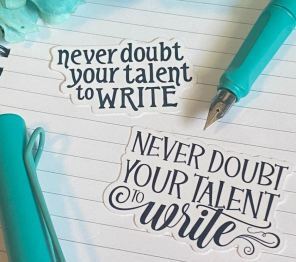 Motivational Stickers
Motivational StickersImagine opening your laptop and seeing an inspiring quote that gets you all pumped up – that’s what these great little stickers do.
Check out the huge variety of you can get from BiblioficDesigns!
 A Portable Desk
A Portable DeskWant to write on the couch, in bed, in the car or on the lounger in the backyard? Get this portable laptop desk.
I have one and use it all the time. I love being able to move around and find the best spot to inspire me as I work!
 Yankee Candles
Yankee CandlesBecca loves certain things – her kids, cats, peanut butter protein shakes, and yes, Yankee Candles.
Candles are a big part of her writing routine, and she always has one burning when it’s time to work because it triggers her brain to get down to business. This is a great addition to any writer’s desk, and heck, they smell so good!
 An Owl Mug
An Owl MugLook I’m not saying I have an owl addiction, but well, yeah, I have an owl addiction.
Owls are wise and make a great writerly mascot, so I think we both know you and every other writer need at least one mug…maybe two. And my goodness, look at this pair. I’m in love!
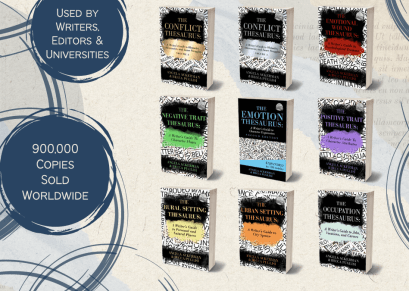 A Bestselling Writing Guide from Us
A Bestselling Writing Guide from UsBy now, you likely know we’re the authors behind The Emotion Thesaurus and its many sibling guides. These books have helped writers all over the world brainstorm stronger description and master show-don’t tell, and we love creating them.
If you are new to these books, you pick your topic, and then dive in. You’ll learn how to write that subject better, be it emotions, setting, personality, conflict, etc., and you’ll have a brainstorming resource (the ‘thesaurus’ part) that gives you constant ideas on how to bring your story to life.
Don’t know which book to get? The the Emotion Thesaurus (Blue), which is the most popular volume. Or, choose the Conflict Thesaurus (Gold & Silver), the last two releases. You’ll love having so many possible conflict scenarios on tap to help you write fresh, intense fiction.
 Literary Insults Poster
Literary Insults PosterThis poster was a birthday gift from my daughter-in-law, and I love it. It’s filled with great literary insults (that you can use, muahaha), so that’s fun, right?
It’s a neat collectable and conversation piece all in one, so frame this poster and then display it in your office with epic nerdy pride. I did!
 A Weighted Blanket
A Weighted BlanketOkay this is a super thoughtful gift, because we all know writers keep odd hours and never get enough sleep. So, make sure your sleep is quality by wrapping yourself in a heavy, fuzzy blanket that applies just enough pressure to make all your anxiety slip away. I got one a few years ago and have never slept better.
A Powerful Story Toolkit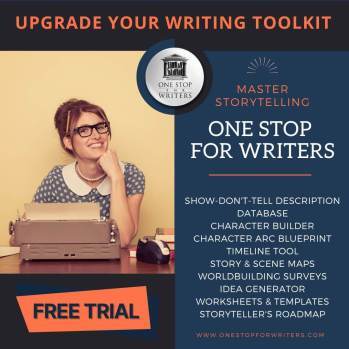
There’s no better story support than One Stop for Writers. With its massive show-don’t-tell database, innovative story tools, and the Storyteller’s Roadmap, planning, writing, and revising becomes so much easier.
Everything you need to create, all in one place. This is a game-changer for anyone who needs help writing stronger stories. A gift certificate makes a great stocking stuffer (1-month, 6-months, or 12-months) and the recipient will never forget how you supported them on the path to their author goals.
We hope you enjoyed this list of our favorite things, and it gives you some gift-giving ideas. And remember, it’s okay to buy yourself a little something , too, or collect a few of these ideas for when you’re asked by others what you’d like for Christmas.
The post Our Favorite Gifts for Writers appeared first on WRITERS HELPING WRITERS��.
November 26, 2022
Fear Thesaurus Entry: Rejection
Debilitating fears are a problem for everyone, an unfortunate part of the human experience. Whether they’re a result of learned behavior as a child, are related to a mental health condition, or stem from a past wounding event, these fears influence a character’s behaviors, habits, beliefs, and personality traits. The compulsion to avoid what they fear will drive characters away from certain people, events, and situations and hold them back in life.
In your story, this primary fear (or group of fears) will constantly challenge the goal the character is pursuing, tempting them to retreat, settle, and give up on what they want most. Because this fear must be addressed for them to achieve success, balance, and fulfillment, it plays a pivotal part in both character arc and the overall story.
This thesaurus explores the various fears that might be plaguing your character. Use it to understand and utilize fears to fully develop your characters and steer them through their story arc. Please note that this isn’t a self-diagnosis tool. Fears are common in the real world, and while we may at times share similar tendencies as characters, the entry below is for fiction writing purposes only.
 Fear of Rejection
Fear of RejectionNotes
One of our basic human needs is to be loved, wanted, needed, and accepted, so it makes sense that people generally want to avoid rejection. When this fear is taken to an extreme, it can hold the character back in their career, relationships, and their basic enjoyment of life. As a result, characters with this fear often feel stuck where they are, unable to grow.
What It Looks Like
Being overly agreeable
Exhibiting a strong work ethic (to prove their worth to others)
Being a perfectionist
Being passive aggressive rather than straightforward about their feelings
The character not standing up for themselves
Sticking like glue to the people who accept and love the character
Being conflict-averse
Being shy with new people and in new situations
Taking extra pains with their appearance so they’ll always look their best
Being a people-pleaser
Being evasive or dishonest about beliefs and opinions that others may not agree with
Jumping to conclusions about what others are thinking or feeling
Getting their feelings hurt easily
The character keeping mostly to themselves
Avoiding romantic relationships unless they’re absolutely sure of the other person’s feelings
Underachieving and encouraging low expectations (so people won’t expect too much, be disappointed, and reject them)
Having secret hobbies
Ending romantic relationships and leaving jobs prematurely (rejecting others before they can reject the character)��
Common Internal Struggles
Wanting to open up to others but being afraid their true thoughts and opinions will be criticized
Wanting to stay in a relationship but also wanting to get out of it
Being afraid of failure or letting people down
The character despairing of ever reaching their full potential
Longing to be in a romantic relationship but being too afraid to put themselves out there
Struggling with loneliness but not knowing how to build deep connections with others
Feeling unwanted or unlovable
Constantly worry about what others think
The character wondering what’s wrong with them
Flaws That May Emerge
Antisocial, Cowardly, Disorganized, Insecure, Jealous, Needy, Oversensitive, Perfectionist, Suspicious, Timid, Withdrawn
Hindrances and Disruptions to the Character’s Life
Being consumed with worry about other people and what they think
Trouble making and keeping friends
An inability to form trusting relationships
Burning out from the constant drive to please everyone or be above reproach
Frequently being taken advantage of
Living a life short of their full potential
Low self-esteem undermining the character’s belief in themselves and their capabilities
Scenarios That Might Awaken This Fear
A situation where the character must be chosen by others (a job interview or promotion, a political campaign, etc.)
The character meeting someone they’d like to date (but will have to ask out)
The character’s work being criticized
Being fired or laid off
A friend canceling plans with the character
Being divorced or dumped
A child asking to live with the character’s ex
Other Fear Thesaurus entries can be found here.
 Need More Descriptive Help?
Need More Descriptive Help?While this thesaurus is still being developed, the rest of our descriptive collection (16 unique thesauri and growing) is accessible through the One Stop for Writers THESAURUS database.
If you like, swing by and check out the video walkthrough for this site, and then give our Free Trial a spin.
The post Fear Thesaurus Entry: Rejection appeared first on WRITERS HELPING WRITERS��.
November 25, 2022
Game-Changing Creative Tools for New & Advanced Writers

One thing that drives all writers is the desire to create a truly amazing story, one a reader can’t put down or forget.
It’s why we’re always learning to deepen our storytelling skills – we want that next book to be our best one yet.
But the learning curve can be frustrating, and it’s hard when so many things are competing for our time. Becca and I know this first hand as we’ve been studying story craft for almost 20 years.
We’ve been sharing what we know for a long time now, both here and at One Stop for Writers. Time is precious, and we want every writing session of yours to be a great one. If you only know us by our thesaurus books, you might be surprised to know we’ve built other tools to help writers think like a story expert so every aspect of their story is as strong as it can be.
Character Builder Tool
This tool at One Stop for Writers contains massive characterization databases for personality traits, emotions, skills, motivations, backstory wounds, physical features, occupations, and more, so planning original characters is incredibly easy. Even better, this tool uses psychology to show you how each element or quality you choose will alter how your character thinks and behaves, meaning it will be much easier to write their actions and responses in ways that line up with who they are.
Did we mention the Character Builder also identifies key details as you brainstorm and builds a character arc blueprint for you? See this tool in action >>
Story Map, Scene Maps, and Timeline Tools
Every writer has their own process when it comes to planning a story or novel. Some prefer to fully outline a story tip to toe so they know exactly which events they are writing towards, and see how plot and character arc work together. Story Maps is great for this, especially as it helps you navigate story structure so you end up with a strong story foundation. Visit Story Maps >>
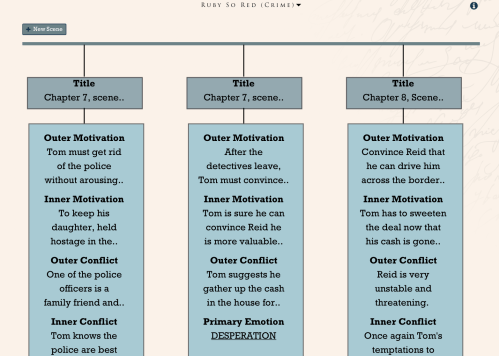
Scene Maps look at planning at the scene level, which can be great both for micro-planning and diagnosing what’s not quite working in your novel. This tool shows you all the major elements a scene should have, and then you can make quick notes about each scene, stringing together as many as you like.
The scene cards are moveable, and come in two versions so you can choose the terminology that fits you best: Formal Scene Maps >> and Informal Scene Maps >>
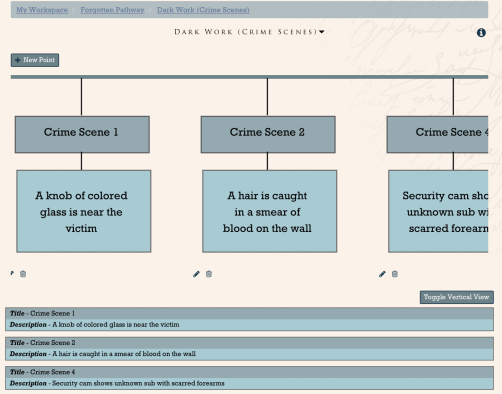
Finally, for Pantsers who prefer less planning, we have the Timeline Tool, which is great for jotting down ideas about possible scenes without structuring them too much.
Like Scene Maps, the cards can be moved around, so play with the order as you storyboard ideas, track events like a series of murders or stops on a character’s quest, and more. Check out the Timeline Tool >>
WorldBuilding SurveysReal-world or not, every story has a foundational “where” and it’s up to you to know this reality inside and out, whether it’s Middle Earth or Chicago.

We created choose-your-own surveys where you drag questions to answer about your story’s where, creating a custom survey. Putting thought into the cities, people, places, government, travel methods, climate, magic, and other key details etc. will help you write settings with authenticity and avoid logic problems that could pull readers out of the story. Find out more >>
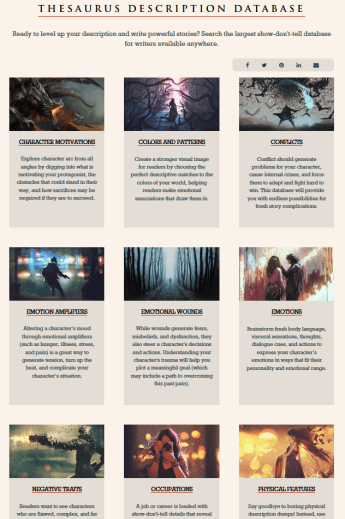 Show-Don’t-Tell Database
Show-Don’t-Tell Database Ideas come to life through description, and the more focus and meaningful the detail, the better readers can imagine what’s happening to the characters they’ve come to care about. But it’s all about choosing the right details, ones that work hard in your story.
Our show-don’t-tell THESAURUS is the largest of its kind, supplying you with non-stop ideas on how to showcase your characters, locations, and story events so readers feel part of each scene and experience. Explore the THESAURUS database >>
Storyteller’s RoadmapWith so many story elements to juggle–plot, pacing, characters, theme, symbolism, arc, dialogue, subtext, story structure and more–getting a novel from that first idea to a publish-ready novel is a huge undertaking. In fact, many writers stop before a story is complete because they got lost along the way, felt stuck, or believed they couldn’t get the story to where it needed to be.

The Storyteller’s Roadmap is the cure for unfinished novels because it guides writers step-by-step through planning, writing, and revising so they always know what to focus on, and have the tools, resources, and knowledge to get past any difficulty or struggle. Visit the Storyteller’s Roadmap >>
Templates, Worksheets, and Generators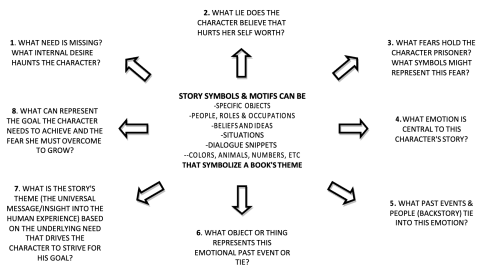
Some writers prefer Templates and Worksheets to help launch their imagination and focus on one thing at a time. We’ve put together some innovative ones that go further than what you might typically see elsewhere.
And if you need an extra brainstorming nudge, the Idea Generator can help you round out a character with a secret or hobby, give you ideas for plot complications, suggest story stakes, and more.
Tip Sheets & Check List DatabaseTaking a story from good to great is done when we optimize everything we can. Our Tip Sheet Database is packed with ways to improve your story and troubleshoot problems. Come download a few – no subscription needed >>
 Is It Time to Try Something New?
Is It Time to Try Something New? All of these tools can be found at One Stop for Writers, so if you’d like to try any of them out, activate the free trial and see if these are a game-changer for you. But if you already have a process that works and feel you have no real struggles on the writing front, keep doing what you’re doing now, because it’s clearly working for you!
The post Game-Changing Creative Tools for New & Advanced Writers appeared first on WRITERS HELPING WRITERS��.
Game-Changing Tools for New & Advanced Writers

One thing that drives all writers is the desire to create a truly amazing story, one a reader can’t put down or forget.
It’s why we’re always learning to deepen our storytelling skills – we want that next book to be our best one yet.
But the learning curve can be frustrating, and it’s hard when so many things are competing for our time. Becca and I know this first hand as we’ve been studying story craft for almost 20 years.
We’ve been sharing what we know for a long time now, both here and at One Stop for Writers. Time is precious, and we want every writing session of yours to be a great one. If you only know us by our thesaurus books, you might be surprised to know we’ve built other tools to help writers think like a story expert so every aspect of their story is as strong as it can be.
Character Builder Tool
This tool at One Stop for Writers contains massive characterization databases for personality traits, emotions, skills, motivations, backstory wounds, physical features, occupations, and more, so planning original characters is incredibly easy. Even better, this tool uses psychology to show you how each element or quality you choose will alter how your character thinks and behaves, meaning it will be much easier to write their actions and responses in ways that line up with who they are.
Did we mention the Character Builder also identifies key details as you brainstorm and builds a character arc blueprint for you? See this tool in action >>
Story Map, Scene Maps, and Timeline Tools
Every writer has their own process when it comes to planning a story or novel. Some prefer to fully outline a story tip to toe so they know exactly which events they are writing towards, and see how plot and character arc work together. Story Maps is great for this, especially as it helps you navigate story structure so you end up with a strong story foundation. Visit Story Maps >>

Scene Maps look at planning at the scene level, which can be great both for micro-planning and diagnosing what’s not quite working in your novel. This tool shows you all the major elements a scene should have, and then you can make quick notes about each scene, stringing together as many as you like.
The scene cards are moveable, and come in two versions so you can choose the terminology that fits you best: Formal Scene Maps >> and Informal Scene Maps >>

Finally, for Pantsers who prefer less planning, we have the Timeline Tool, which is great for jotting down ideas about possible scenes without structuring them too much.
Like Scene Maps, the cards can be moved around, so play with the order as you storyboard ideas, track events like a series of murders or stops on a character’s quest, and more. Check out the Timeline Tool >>
WorldBuilding SurveysReal-world or not, every story has a foundational “where” and it’s up to you to know this reality inside and out, whether it’s Middle Earth or Chicago.

We created choose-your-own surveys where you drag questions to answer about your story’s where, creating a custom survey. Putting thought into the cities, people, places, government, travel methods, climate, magic, and other key details etc. will help you write settings with authenticity and avoid logic problems that could pull readers out of the story. Find out more >>
 Show-Don’t-Tell Database
Show-Don’t-Tell Database Ideas come to life through description, and the more focus and meaningful the detail, the better readers can imagine what’s happening to the characters they’ve come to care about. But it’s all about choosing the right details, ones that work hard in your story.
Our show-don’t-tell THESAURUS is the largest of its kind, supplying you with non-stop ideas on how to showcase your characters, locations, and story events so readers feel part of each scene and experience. Explore the THESAURUS database >>
Storyteller’s RoadmapWith so many story elements to juggle–plot, pacing, characters, theme, symbolism, arc, dialogue, subtext, story structure and more–getting a novel from that first idea to a publish-ready novel is a huge undertaking. In fact, many writers stop before a story is complete because they got lost along the way, felt stuck, or believed they couldn’t get the story to where it needed to be.

The Storyteller’s Roadmap is the cure for unfinished novels because it guides writers step-by-step through planning, writing, and revising so they always know what to focus on, and have the tools, resources, and knowledge to get past any difficulty or struggle. Visit the Storyteller’s Roadmap >>
Templates, Worksheets, and Generators
Some writers prefer Templates and Worksheets to help launch their imagination and focus on one thing at a time. We’ve put together some innovative ones that go further than what you might typically see elsewhere.
And if you need an extra brainstorming nudge, the Idea Generator can help you round out a character with a secret or hobby, give you ideas for plot complications, suggest story stakes, and more.
Tip Sheets & Check List DatabaseTaking a story from good to great is done when we optimize everything we can. Our Tip Sheet Database is packed with ways to improve your story and troubleshoot problems. Come download a few – no subscription needed >>
 Is It Time to Try Something New?
Is It Time to Try Something New? All of these tools can be found at One Stop for Writers, so if you’d like to try any of them out, activate the free trial and see if these are a game-changer for you. But if you already have a process that works and feel you have no real struggles on the writing front, keep doing what you’re doing now, because it’s clearly working for you!
Black Friday Offer: Save 40% at One Stop for Writers
We love to see writers get the help they need, so if you’d like to come join the family, use this one-use discount code:
BF2022
And save 40% when you subscribe to the 6-month plan.
We hope you can put these savings to good use. Just activate this code by November 30th, 2022, and we’ll see you at One Stop!
The post Game-Changing Tools for New & Advanced Writers appeared first on WRITERS HELPING WRITERS��.
November 21, 2022
Phenomenal First Pages Contest
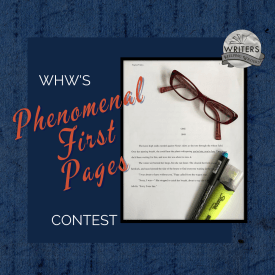 Hey, wonderful writerly people! It���s time for our monthly first-page critique contest
Hey, wonderful writerly people! It���s time for our monthly first-page critique contest 
If you���re working on a first page (in any genre except erotica) and would like some objective feedback, please leave a comment. Any comment :). As long as the email address associated with your WordPress account/comment profile is up-to-date, I���ll be able to contact you if your first page is chosen. Just please know that if I���m unable to get in touch with you through that address, you���ll have to forfeit your win.
Two caveats:
 Please be sure your first page (double-spaced in 12-point font) is ready to go so I can critique it before next month���s contest rolls around. If it needs some work and you won���t be able to get it to me right away, let me ask that you plan on entering the next contest, once any necessary tweaking has been taken care of.
Please be sure your first page (double-spaced in 12-point font) is ready to go so I can critique it before next month���s contest rolls around. If it needs some work and you won���t be able to get it to me right away, let me ask that you plan on entering the next contest, once any necessary tweaking has been taken care of.
 This contest only runs for 24 hours, start to finish, so get your comment in there!
This contest only runs for 24 hours, start to finish, so get your comment in there!
Three commenters��� names will be randomly drawn and posted tomorrow morning. If you win, you can email me your first page and I���ll offer my feedback.
We run this contest on a monthly basis, so if you���d like to be notified when the next opportunity comes around, consider subscribing to our blog (see the right-hand sidebar).
Best of luck!
PS: If you want to amp up your first page, grab our helpful First Pages checklist from One Stop for Writers. And for more instruction on these important opening elements, see this Mother Lode of First Page Resources.The post Phenomenal First Pages Contest appeared first on WRITERS HELPING WRITERS��.
November 19, 2022
Fear Thesaurus Entry: Sickness
Debilitating fears are a problem for everyone, an unfortunate part of the human experience. Whether they’re a result of learned behavior as a child, are related to a mental health condition, or stem from a past wounding event, these fears influence a character’s behaviors, habits, beliefs, and personality traits. The compulsion to avoid what they fear will drive characters away from certain people, events, and situations and hold them back in life.
In your story, this primary fear (or group of fears) will constantly challenge the goal the character is pursuing, tempting them to retreat, settle, and give up on what they want most. Because this fear must be addressed for them to achieve success, balance, and fulfillment, it plays a pivotal part in both character arc and the overall story.
This thesaurus explores the various fears that might be plaguing your character. Use it to understand and utilize fears to fully develop your characters and steer them through their story arc. Please note that this isn’t a self-diagnosis tool. Fears are common in the real world, and while we may at times share similar tendencies as characters, the entry below is for fiction writing purposes only.
 Fear of Sickness
Fear of SicknessNotes
Being sick is typically annoying, unpleasant, and sometimes painful. Many people are especially worried now, after the pandemic, about coming down with something. But it becomes a real problem when the fear of sickness begins to dictate a character’s very livelihood and ability to function in society.
What It Looks Like
Frequent hand washing
Carrying sanitizer or wipes
Keeping a distance from others
Only leaving the house when absolutely necessary
Symptom-checking and self-diagnosis
Avoiding seeing a doctor (for fear of being diagnosed with something)
Running to the doctor about every cough or sniffle
Wearing a mask, gloves, or other protective gear in public
Sanitizing objects (doorknobs, faucets, buttons) before touching them
Avoiding crowds
Maintaining a healthy diet
Nosiness about friends’ and family’s health
Looking up diseases and symptoms online
Limiting loved ones’ activities to keep them healthy
Self-isolation
Obsessive-compulsive habits
Embracing home and natural remedies��
Spending a lot of money on vitamins and supplements
Judging others for not taking the same precautions
Common Internal Struggles
The character constantly worrying that they’re coming down with something
Struggling with loneliness
The character feeling shame for their compulsive behaviors
Fearing that minor symptoms (headache, fatigue, etc.) are signs of something serious
Being conflicted about whether to see a doctor
Worrying about their children or loved ones getting sick
Wanting to attend an event but being too afraid of contracting an illness
Feeling judged by others who think the character is overreacting
Flaws That May Emerge
Antisocial, Compulsive, Cynical, Fussy, Inflexible, Irrational, Judgmental, Morbid, Nervous, Nosy, Obsessive, Paranoid, Pushy, Withdrawn, Worrywart
Hindrances and Disruptions to the Character’s Life
Being unable to care for a sick loved one due to fear of germs
Living in isolation (being unable to go to the store, enjoy hobbies, socialize, etc.)
A serious condition going undiagnosed and untreated
The fear spiraling into an anxiety disorder
Being unable to attend parties, concerts, and other get-togethers
Friction with loved ones who feel coddled and over-protected
Scenarios That Might Awaken This Fear
A pandemic or disease outbreak
A loved one receiving a serious diagnosis
The annual arrival of cold and flu season
Witnessing someone get sick in public
A routine doctor’s physical
Being in places the character believes to be dirty or germy
Being ineligible to take certain medications or vaccines
Getting sick in a place where healthcare is not readily available
Experiencing symptoms that hint at a serious disorder or illness
The character learning that someone they were in contact with was diagnosed with a contagious disease
Other Fear Thesaurus entries can be found here.
 Need More Descriptive Help?
Need More Descriptive Help?While this thesaurus is still being developed, the rest of our descriptive collection (16 unique thesauri and growing) is accessible through the One Stop for Writers THESAURUS database.
If you like, swing by and check out the video walkthrough for this site, and then give our Free Trial a spin.
The post Fear Thesaurus Entry: Sickness appeared first on WRITERS HELPING WRITERS��.
November 16, 2022
Top Black Friday Deals for Writers
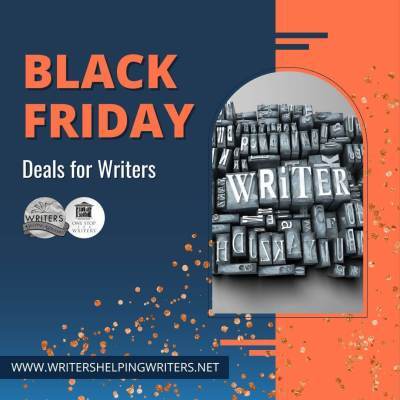
We’re all feeling the pinch of inflation, so Black Friday deals are even more welcome than usual, am I right?
Well, I’ve been scouting deals for you, so have a look at what I’ve found below.
Hopefully you’ll be able to get all the help you need without stressing your wallet!
 Writing Mastery Academy:
Writing Mastery Academy: Writing Mastery Academy offers on-demand writing courses, live webinars, and an online community to give fiction writers the knowledge, skills, and support they need to achieve all their writing goals. Get 50% off your first 3 months with coupon code BLACKFRIDAY22-50, or 20% off your first year of membership with coupon code BLACKFRIDAY22-20 by December 4th.
 ProWritingAid:
ProWritingAid:
Save up to 50% on select packages so ProWritingAid can give you clear, easy steps to improve your writing so you can share your stories and ideas with confidence. Sale ends November 28th.
 Novel Factory:
Novel Factory:
Save 30% on annual subscriptions and learn the craft of writing to become more productive and profitable with their selection of templates and tools. Use the code BLACKFRIDAY2022 by November 28th to grab this deal.
 Fictionary Storyteller:
Fictionary Storyteller:
Editing a manuscript is a big undertaking. StoryTeller makes editing easier by applying universal storytelling structures to each and every scene. Evaluate and revise your manuscript against 38 Fictionary Story Elements and save 40% while doing it. Grab this deal on monthly and annual subscriptions between November 23-30th using the code BLACKFRIDAY2022.
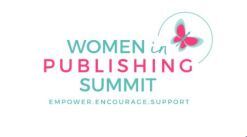 Women In Publishing Summit
:
Women In Publishing Summit
:The publishing world can feel lonely and frustrating at times, so come learn from women in the industry and gain new knowledge and support as you write, publish, and sell. Save $50 off early bird ticket prices (so $100 in total) and get your ticket to the annual Women in Publishing Summit using the code WIPBF50. Ends December 4th.
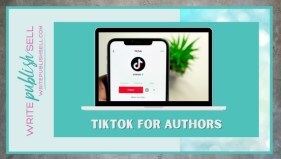 Write | Publish | Sell
:
Write | Publish | Sell
: TikTok is rapidly growing as a major platform driving book sales, so if you’re looking for a basic level course to get started without the overwhelm, we’ve got you covered in TikTok for Authors! Get 40% off this course with the code BF40TIKTOK by December 4th.
 Spark Your Story Online Writing Program:
Spark Your Story Online Writing Program: The Spark Your Story Lab will help you sidestep blocks, craft powerful memoir AND streamline the publishing process. Save 30% off the 12-month enrollment with the code BLACKFRIDAY2022 up to December 4th.
 Publisher Rocket
:
Publisher Rocket
: Get their signature Mastering Keywords Course free with the purchase of Publisher Rocket, a powerful tool to help you determine the best keywords for your book ($97). This sale runs from November 23-30th.
 Savannah Gilbo’s Workshops:
Savannah Gilbo’s Workshops: If you want to Hook Readers in the First 5 Pages or Write Compelling, Well-Structured Scenes, use the code BLACKFRIDAY2022 from Nov. 23 – 28 to save 30% off enrollment.
 Sacha Black’s Select Courses & Books:
Sacha Black’s Select Courses & Books: Save 30% with the code BLACKFRIDAY30 by buying direct, whether it be to enroll in her Villains Masterclass, Anatomy of Prose: The Senses course, or her catalog of writing guides! On now until December 4th.
 Shut Up and Write the Book:
Shut Up and Write the Book: Save 50% on your preorder until November 24th using the link here, and when you do preorder this step-by-step guide to writing your novel, and you’ll automatically be eligible to receive a free PDF digital workbook! Simply submit your proof of purchase to preorder@jennamoreci.com to receive your gift.
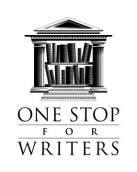 One Stop for Writers:
One Stop for Writers: Save 40% on the ultimate story support tool! One Stop’s arsenal of ground-breaking resources was designed by Angela Ackerman & Becca Puglisi to help you think and write like an expert:
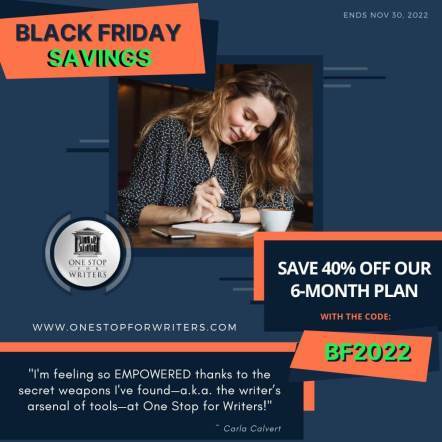
SHOW-DON’T-TELL DESCRIPTION DATABASE
CHARACTER BUILDER
CHARACTER ARC BLUEPRINT
TIMELINE TOOL
STORY & SCENE MAPS
WORLDBUILDING SURVEYS
IDEA GENERATOR
TEMPLATES & WORKSHEETS
THE STORYTELLER’S ROADMAP
INSIGHTFUL CRAFT TUTORIALS & MORE
Confidently build characters with depth, craft fresh plots, and design worlds your readers won���t want to leave. Not a story expert? Don’t worry. One Stop’s Storyteller���s Roadmap guides you step-by-step as you plan, write, and revise your way to a publish-ready novel. Use the code BF2022 to receive a 40% discount on the 6-month plan.
(Deal ends November 30th.)
We hope you find a few things on this list that help you on your journey. Happy writing & saving!
The post Top Black Friday Deals for Writers appeared first on WRITERS HELPING WRITERS��.
November 15, 2022
Historical Fiction: The Story Comes First
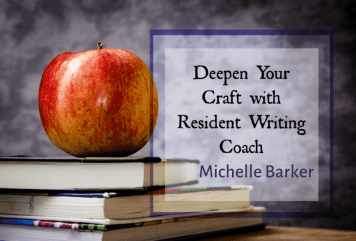
As writers of historical fiction, we might be tempted to believe our job is to teach readers about a certain event or era. While that might be part of what we���re doing, I would argue it���s not the most important part. The number one job of a fiction writer is to tell a story. A history textbook tells about history, but historical fiction should bring it to life by showing it. That���s our true mandate. It���s the difference between reading a menu and eating the meal.
But historical fiction doesn���t make this easy. Sometimes facts and figures need to be included; there are real events and people to take into account.
The thing we���re striving for in fiction is authenticity. We want our work to have the ring of truth to it. To that end, research is crucial. If we don���t do our research as historical fiction writers, we lose credibility with our readers. But researching comes with its own pitfalls. Information is dry and boring to read. The trouble is, we authors can get pretty fired up about our research. It���s cool stuff, plus we���ve worked hard to find it. The temptation is to use as much of it as we can. Indeed, the more research we���ve done, the more strongly we���ll feel about this.
But there���s a good chance that, for the sake of the story, a sizable amount of our research will never make it into the novel. We need to make our peace with that because research can easily get in the way of good storytelling. We���ll want to find a way to weave our research into the story seamlessly.
If we don���t, we���re likely to end up with an info-dump.
The Dreaded InfodumpAn infodump is an extended section of telling (rather than showing), a chunk of information that is ���dumped��� into the reader���s lap.
Introducing readers to a historical era, explaining the political situation or a technical procedure���these are difficult things to do. The infodump makes it easy. You simply take a couple of pages���or an entire chapter���and explain it. This is why infodumps often show up either in prologues or first chapters. The author explains all the important bits to the reader up front before starting the story.
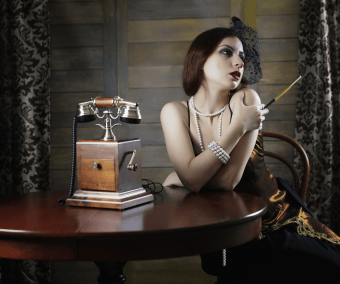
While an infodump might tell us about the world of the story, it doesn���t do anything to develop character, it doesn���t advance the plot, and it doesn���t really help the reader because usually there���s so much information crammed into one section, the reader won���t remember it. And it���s not presented in scene. It���s presented as information. Those are the moments in a story when a reader���s mind wanders.
Readers want to be immersed in the moment of the story. They want to feel like they���re standing beside our main character experiencing all the exciting things alongside them.
Infodumps also fail to create an emotional reaction in the reader. Most infodumps are written in a way that is cold and flat. When we fail to engage a reader���s emotions, we fail to engage the reader.
���������������������� To Avoid This Kind of Writing:Look for anything that isn���t happening in the present moment of the story. Have a close look at your sections of exposition. Backstory and world-building are common offenders.Figure out what needs to be explained only at that moment. Ask yourself: what does the reader need to know right now? If they don���t need to know it now, cut it, and save it for when they do.Trust your reader. They can piece things together; in fact, they like figuring things out. That���s part of the process of discovery involved in reading.If you���re unsure of whether you���ve given the reader enough information, try it out on someone. But beware of going from zero to overload if your reader asks for more information. Often, a subtle hint is all that���s needed.Incorporating Research into a SceneThere are a few tricks we can use to weave research into a story as seamlessly as possible:
Integrate it into the scene. Make it relevant to something that���s happening in the moment. That way, it moves the plot forward. Add tension. Make the information something that causes problems for the characters. Show their reaction. This engages the reader. If the information matters to the characters, it will matter to the reader. Write it in such a way that it conveys something about a character���s personality. Then it adds to character development. Keep it brief. A sentence or two of information is enough.Break it up. Don���t stick all your information in one spot. Sprinkle it throughout a scene. Remember, the story comes first.Use Your Research ElsewhereThere will always be a difference between the amount of research we do for a historical novel and the amount that makes it into the book. But why not use that extra information in other ways?
Write some non-fiction pieces about the things you discovered while researching your novel. This is also a great way to generate some additional buzz for your work.Add the additional research to your website or on social media for readers who want to know more.Get creative: turn your facts into a trivia game or add them to presentations when you���re promoting your work.Research is never a waste of time. Even if it doesn���t make it into the novel, it will show in subtle ways. The more we read about the world we���re building, the more we internalize it, and that is guaranteed to lend authenticity to our work.
The post Historical Fiction: The Story Comes First appeared first on WRITERS HELPING WRITERS��.
November 12, 2022
Fear Thesaurus Entry: Losing Control
Debilitating fears are a problem for everyone, an unfortunate part of the human experience. Whether they’re a result of learned behavior as a child, are related to a mental health condition, or stem from a past wounding event, these fears influence a character’s behaviors, habits, beliefs, and personality traits. The compulsion to avoid what they fear will drive characters away from certain people, events, and situations and hold them back in life.
In your story, this primary fear (or group of fears) will constantly challenge the goal the character is pursuing, tempting them to retreat, settle, and give up on what they want most. Because this fear must be addressed for them to achieve success, balance, and fulfillment, it plays a pivotal part in both character arc and the overall story.
This thesaurus explores the various fears that might be plaguing your character. Use it to understand and utilize fears to fully develop your characters and steer them through their story arc. Please note that this isn’t a self-diagnosis tool. Fears are common in the real world, and while we may at times share similar tendencies as characters, the entry below is for fiction writing purposes only.
 Fear of Losing Control
Fear of Losing ControlNotes
To varying degrees, control is something we all desire because we’ve seen what happens when we don’t have it. The resulting disappointments, frustration, and even tragedies can cause a fear to develop, creating problems in many areas of the character’s life.
What It Looks Like
Suppressing emotions
Being rigid and inflexible
Adhering to schedules and routines
Seeking to be an expert on everything so the character will be as informed as possible
Going to great lengths to keep loved ones safe
Displaying Obsessive Compulsive Disorder (OCD) tendencies (checking locks, making sure the oven is off, excessive hand washing, etc.)
Using rituals to calm down (counting, breathing techniques, mantras, etc.)
Employing checklists and to-do lists
Anticipating problems before they happen
Monitoring a spouse’s emails and calls
Micromanaging co-workers��
The character restricting their child’s freedom (with early curfews, limited internet access, having to approve their friends, etc.)
Seeing things in black and white
Being a perfectionist
Being overly sensitive to criticism
Not taking action without in-depth research and planning
Being risk-averse
Other phobias arising from the fear of not being in control (fear of flying, being confined, etc.)
Common Internal Struggles
Knowing that life is filled with change and uncertainties but being unable to come to terms with them
Wanting to delegate a job but feeling like no one else can do it properly
Struggling with stress and anxiety
Knowing certain things can’t be controlled but trying to control them anyway
Wanting to know the future ��
Feeling unsafe when things aren’t certain
Fearing for the safety of loved ones
Obsessing over situations outside of the character’s control
Hindrances and Disruptions to the Character’s Life
Losing employees due to micromanagement
Driving a child away with neediness or nosiness
Being overworked due to an inability to delegate tasks
Being unable to live fully in the present
Not taking advantage of good opportunities because they can’t be controlled or predicted
Being unable to be spontaneous
Struggling with letting others make decisions���when a child chooses to go away to college instead of staying close to home, for instance
Being overwhelmed when unexpected circumstances arise
Scenarios That Might Awaken This Fear
A situation arising where the character cannot control the outcome (getting caught in a storm, being stuck in traffic, contracting a chronic illness, etc.)
A teenager rebelling and wanting more freedom
Hearing about a tragedy that befell a friend’s family��
Entering a transitional phase of life (going to college, getting married, having a child, menopause, etc.)
Experiencing the unexpected loss of a loved one
Being the victim of a crime
The character having to trust someone else (a family member, the judicial system, etc.) for their security
Other Fear Thesaurus entries can be found here.
 Need More Descriptive Help?
Need More Descriptive Help?While this thesaurus is still being developed, the rest of our descriptive collection (16 unique thesauri and growing) is accessible through the One Stop for Writers THESAURUS database.
If you like, swing by and check out the video walkthrough for this site, and then give our Free Trial a spin.
The post Fear Thesaurus Entry: Losing Control appeared first on WRITERS HELPING WRITERS��.
November 10, 2022
How to Uncover Your Character’s Inner Conflict

Conflict is a powerful element within the story and can be loosely categorized as either Outer (external) Conflict or Inner (internal) Conflict. The difference is that outer conflict is something external keeping the character from his goal, while inner conflict is a mental struggle over wanting things that are at odds or compete.
Internal conflicts might be:
Opposing or competing wants, needs, or desiresConfusion about how to feelQuestioning beliefs or valuesSuffering from indecision, insecurity, self-doubt, or another emotion that puts the character at odds with themselvesConflicting duties and responsibilitiesGrappling with an aspect of mental healthInternal Conflict Is RelatableInternal conflict draws readers in because it���s a type of struggle common to us all. Confusion over what to do, feel, and believe, can make us feel exposed. To find a path forward, we must weigh and measure personal beliefs, ideas, and needs. Characters, like us, must do the same, and as they look within themselves for answers, they reveal their vulnerability and humanity to readers.
Scene-to-scene, you���ll usually see inner conflict. At times it���s a heavy weight, other times, indecision over what to do, or deciding what���s better, option A or option B.
Where inner conflict really takes center stage is at the story level. Character vs. Themselves conflict will create a war zone inside your character throughout the story, and they must resolve it successfully to achieve their goal.
5 Ways to Find���and Use���Inner ConflictThis primary inner conflict might be something you need a bit of help to brainstorm, so poke around the psychological side of them to see what shakes loose.
#1: Their Greatest Fear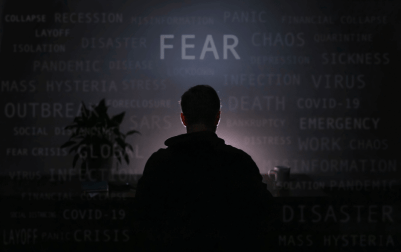
Fears are highly motivating. The inconvenient, everyday ones? Sure, because no one makes split-second decisions better than an arachnophobe who���s just stumbled into a spiderweb. (This is the voice of experience talking.)
But in storytelling, it���s the larger fears that drive both character and story. Fear of failure, being alone, losing a loved one ��� these can push the character to embrace unhealthy habits or paralyze her into maintaining the status quo and resisting needed change.
Imagine, for instance, a character who is afraid of letting others down. This fear will insert itself into every situation where she���s accountable to others, steering her toward doing what others want rather than what she wants, or causing her to step back instead of stepping up. She may worry that if she takes on something big, she���ll screw it up, so she discards goals that could result in personal fulfillment, such as having children or leading a beloved charity group or event. This fear of disappointing others can influence her choice of career or who she marries. It can lead to her sacrificing her own joy for the happiness of others. Then, before you know it, an important human need has been compromised, leading to more problems.
#2: Their Core Moral BeliefsNothing causes psychological turmoil quite like a challenge to one���s core beliefs, and no beliefs are more central than the moral ones, because they define who we are.
This is the situation Paul Edgecombe encounters in The Green Mile. As a death-row prison guard, experience has taught him that the men in his charge are guilty and deserve their punishment. But then he encounters an inmate who doesn���t fit the mold. Could John Coffey, a man found guilty in a court of law, actually be innocent? If so, how can Paul execute him?
Think about what your character believes on the deepest level���his thoughts about right and wrong, good and evil. Then introduce an event that challenges those ideas. If his inner turmoil surrounding this issue or theme is what the story is really about, if it���s something he could struggle with for the story���s entirety, it may be a good choice for his story-level internal conflict.
#3: Their Existential IdeasAnother trait particular to human beings is our curiosity, particularly about big ideas: Who am I? What���s my purpose? Is there life beyond Earth? After death? These questions often aren���t answerable, but your characters grapple with them anyway because the answers will impact and define who they are.
If your character already knows what they believe about bigger life questions, that information will become part of their core belief system. Challenging them will throw the character into an emotional and existential tailspin. If they don���t have answers, the struggle to find them can lead to all kinds of internal strife.
#4: Their Wants and NeedsWants are exactly what they imply: something the character desires but doesn���t necessarily need. By themselves they don���t generate much conflict, but when you set them in opposition to the character���s missing need or a core belief, internal strife explodes onto the scene.
Dan Burns, the protagonist in Dan in Real Life, lost his wife many years prior and is now raising three girls on his own. He hasn���t been truly happy in all that time���but then he meets Marie. Finally! His need for love and belonging is going to be filled���except ��� his brother is already dating her.
Now his need (happiness and love) and his want (to be with Marie) are at odds, because for him to be with Marie, he would have to betray his brother. And how could he be happy doing that?
#5: Their SecretsCharacters jump through all kinds of emotional and logistical hoops to keep important secrets from coming to light. They may withdraw from people, organizations, and cherished hobbies to avoid questions that hit too close to home. You can imagine the inner turmoil that develops when a character must give up an area of giftedness or a close friend in order to keep certain information from getting out.
Many characters will drastically change their behavior to keep their secrets safe. Melinda Sordino in Laurie Halse Anderson���s Speak is so determined to keep a certain event from being revealed that she stops talking altogether. After all, if you can���t talk, you can���t tell. If your character���s secret is one that must be protected at all costs, it can provide compelling fodder for internal conflict.
TIP: Uncover their Backstory WoundAbove are some of the factors that can contribute to a character���s inner struggles, but a lot of times the root of inner conflict can stem from a wounding event in the character���s past, so it���s a good idea to know exactly what that is and the various ways it will impact your character.
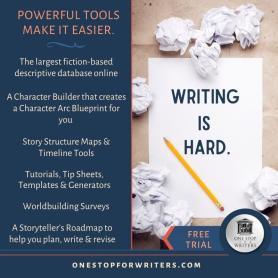 One Stop For Writers can help you dig deeper
One Stop For Writers can help you dig deeperUncover your character���s conflicts, emotional wounds, secrets, personality traits, motivations and more using this powerful thesaurus database and character builder tool.
The post How to Uncover Your Character’s Inner Conflict appeared first on WRITERS HELPING WRITERS��.
Writers Helping Writers
- Angela Ackerman's profile
- 1022 followers



